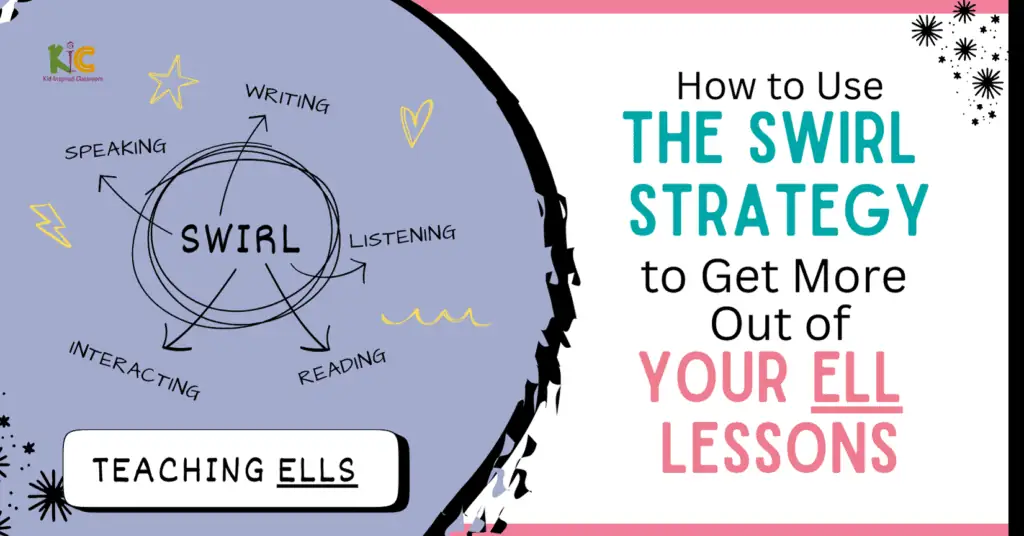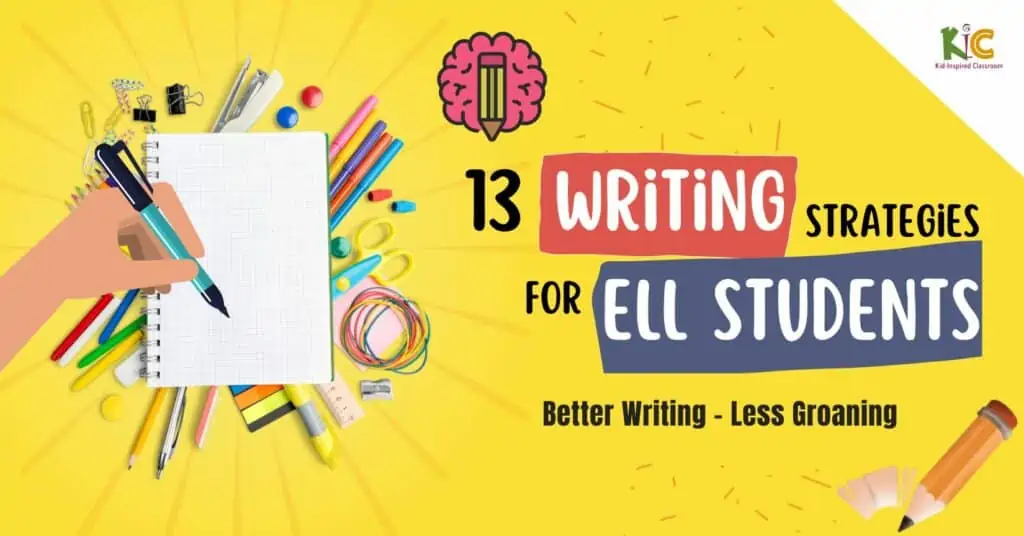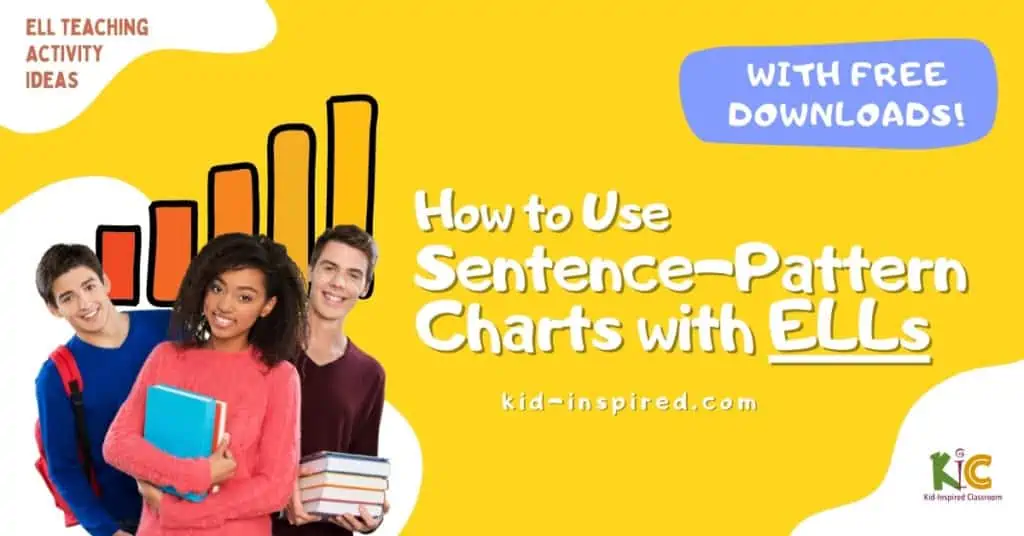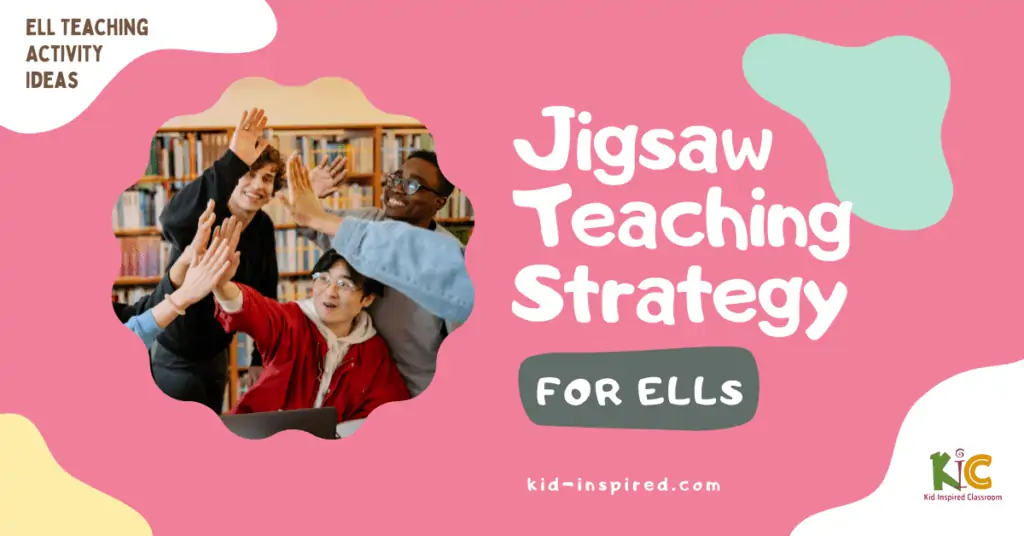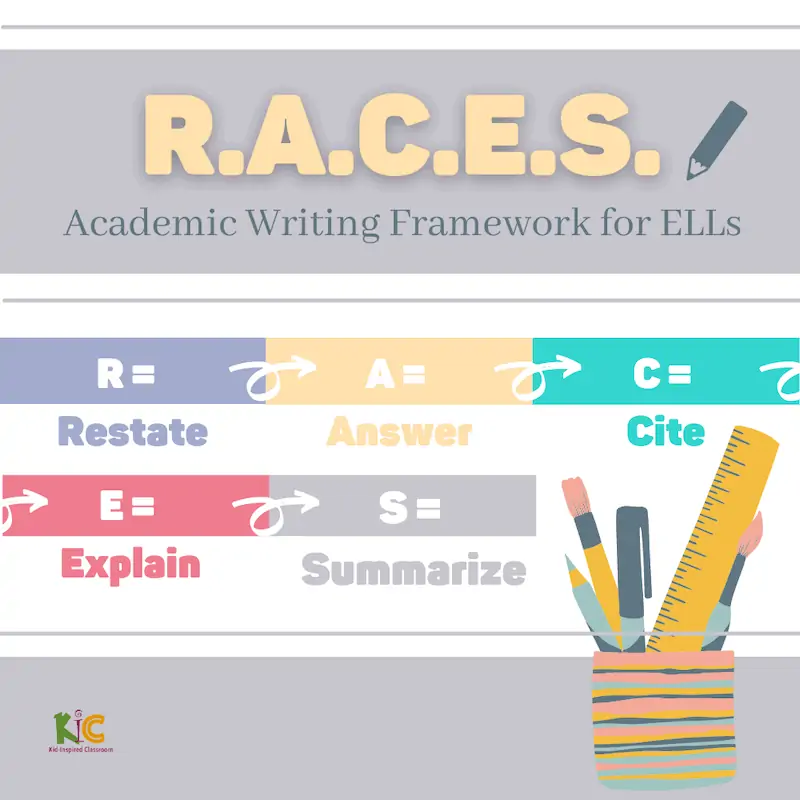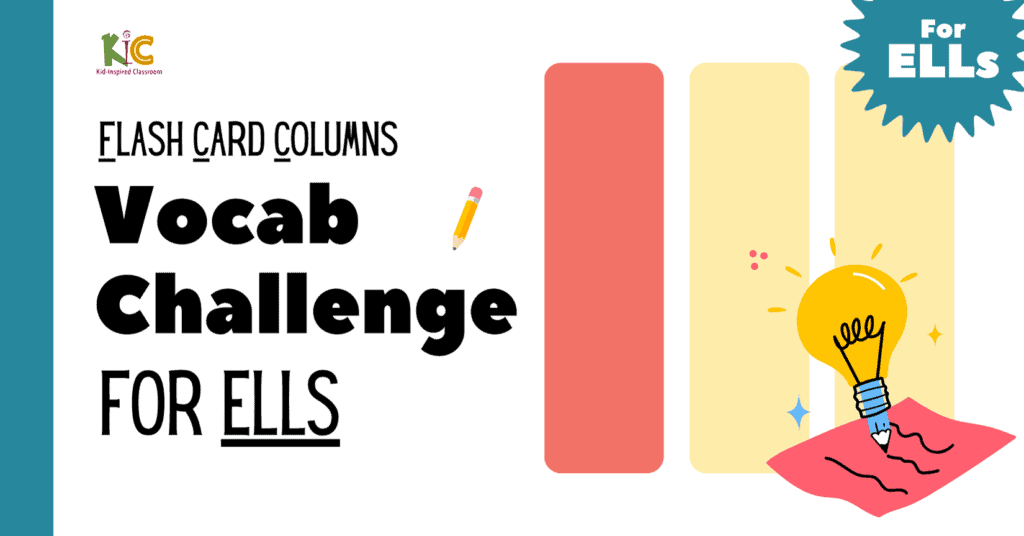
Duration: 15-30 minutes
Type: Whole Group/Small Groups
I love this activity!
This is my recommended go-to vocabulary activity for every lesson you practice vocabulary and spelling. It has a lot of benefits including making sure each student learns the words well, lets students work at their own pace, frees you up to help struggling students, and helps students learn how to learn on their own.
What you will need for FCC Spelling Challenge:
- Flash Cards for Each of the Vocabulary Words You’re Learning
- Magnets, Tape, or Thumb Tacks (For Putting Flash Cards in Columns on a Board Where Everyone Can See Them)

Overview of FCC Spelling Challenge:
Students practice both remembering the vocabulary words as well as how to spell them individually or in small groups however they want at their seats. When a student is ready, they come to the front where they take a blank half sheet of paper, sit at a table in the front and try writing out the words from the first column. Afterward, they take the paper to you (the teacher) or a teacher helper (i.e. a student) to have their answers checked. If they get the words right, they proceed to practicing for the next column. If they don’t, they go back and practice the first column again. (You decide how strict you want to be about correct spelling. You can consider a “as long as I can recognize the word” rule if spelling is not a major focus in your lessons.)
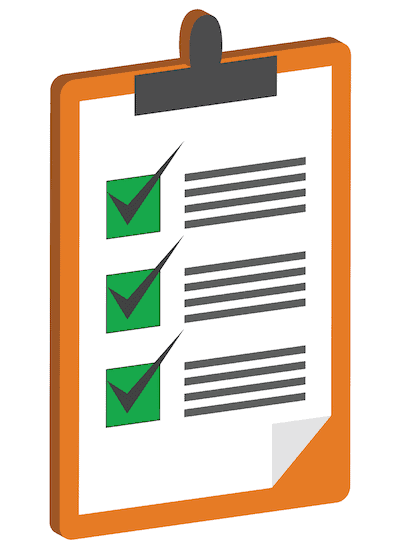
How to Organize FCC Spelling Challenge
- Sort a set of vocabulary word flash cards into three groups. If you have 15 words, for instance, you can sort them into 3 sets of 5 words. Set A should be the easiest words and/or the most important. All students should be able to complete the first set and the easier it is for them to complete the first set, the more momentum they gain to complete the next set.
- Put the flash cards on a board in the front in 3 columns and write A, B, and C over each column respectively. You can use magnets on a white board or you can tape them on a wall or you can put them up with thumb tacks on a corkboard.
- It’s helpful to have gone through the words together as a class, discussing the phonics in each word, what the words mean, and example sentences. You can do a quick Turn, Pair, Share after each word to get each student telling the meaning and an example sentence to a partner.
- Scrap Paper Practice: Give students a list of the words ideally with the pictures from the flash cards for students to practice. (You can see below how the Kid-Inspired resources were designed.) Students look at the first word on the study sheet you provide. They sound out the word, underline/highlight any phonics sounds, then turn over the list and attempt to write the word out on scrap paper. Afterward, they turn the list of spelling words back over and see if they got it correct. Then they go to the next word. This can be done in pairs to help make it more fun for them.
- You situate yourself in the front of the class at a desk where you can see everyone. Have a number of “challenge” tables at the front of the room near the board and the flash cards. Students practice the vocabulary on their own or with a partner (the Scrap Paper Practice activity above is particularly wonderful).
- When they think they’re ready to complete a column, they come to the front, take a new scrap piece of paper, sit down at one of the “challenge” tables, and write out the words from the flash cards in column A.
- They then bring it to you (the teacher) or a teacher helper (i.e. a student) to check. If all good, they move on to column B, practicing at their desk before going to the challenge table again. If they got too many wrong, they practice more with that column and then try again. You can combine this with other challenges to make a student-centered challenge list.
- This activity allows students to go at their own pace and students who struggle more with spelling and/or vocabulary can do just columns A and B while stronger students can do all 3 columns for extra points or rewards.
- Optional: You can have students write out a quick definition and/or an example sentence for each word. You may want to consider having fewer words if you choose to require this though for the sake of time and difficulty.
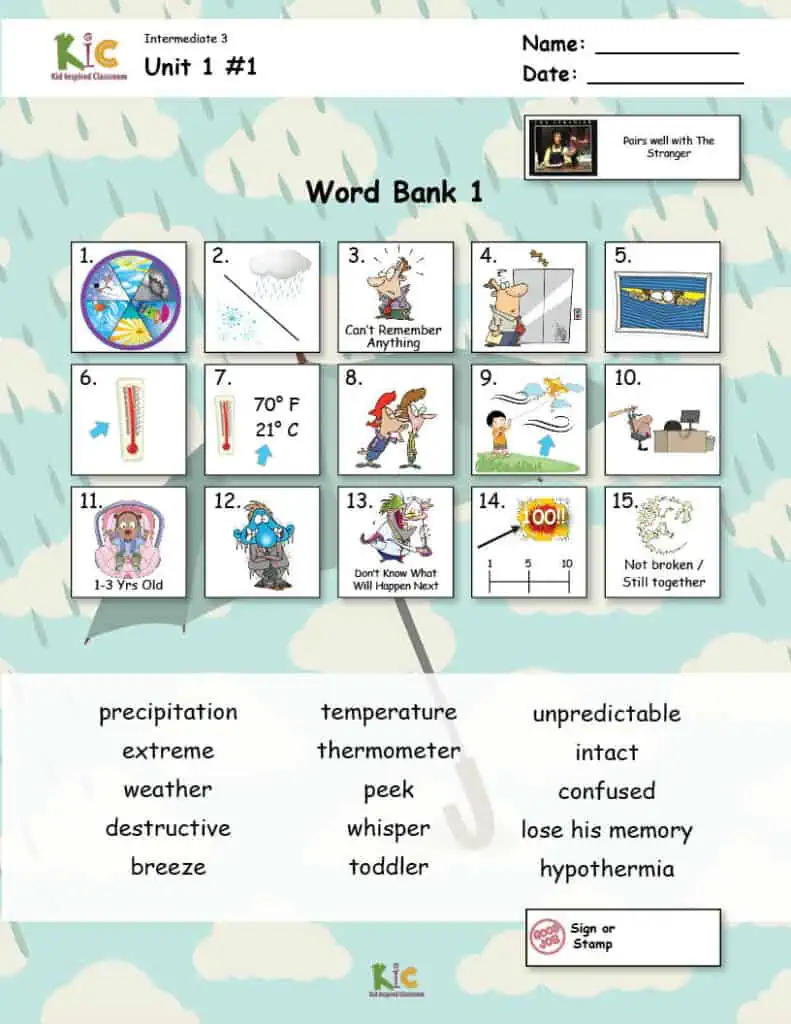
Kid-Inspired Vocabulary Pages
The Kid-Inspired ESL Curriculum vocabulary pages are designed to make activities like the one above easier. You can use this page to teach the students as well. You say the first word, describe what it means and students examine the pictures and discuss which picture best fits the meaning. Then they write the correct number next to the word at the bottom.
Students can use a page like this to study the words at their tables before going to a challenge desk to try a column. Flash cards are also included with the Kid-Inspired lessons for all of the vocabulary.

Benefits of the FCC Spelling Challenge
- Students can work at their own pace to learn the words.
- Students get choice in how they want to practice.
- Each student is required to show mastery individually on their own without help.
- Students learn how to learn on their own.
- The teacher is freed up to work with struggling or unmotivated students.
- The activity has the feeling of being a game even though they are learning vocabulary.
- The activity can be combined with other student-centered activities in a challenge list.
To learn more about setting up your classes this way, you can check out the book Kid-Inspired Teacher.
Have you tried this activity? How did it go? Leave your comments below!
